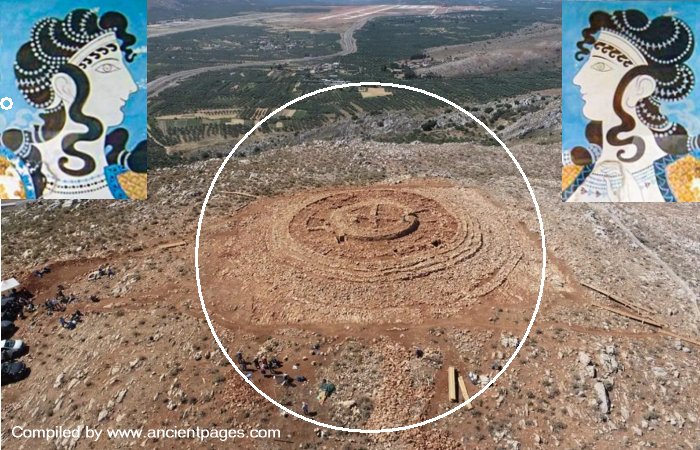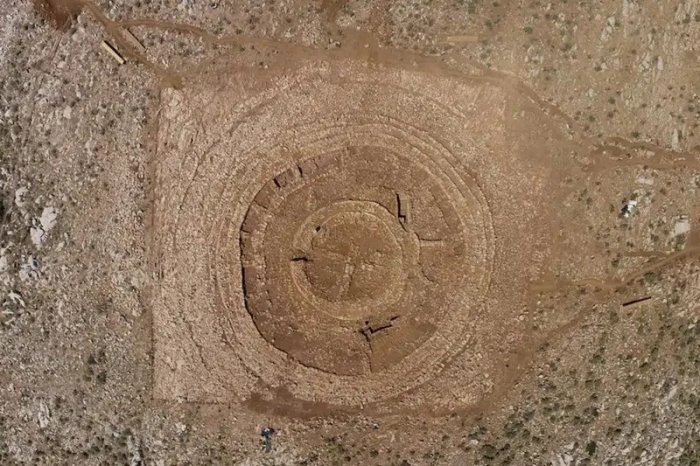Jan Bartek – AncientPages.com – The recent discovery by the Greek Ministry of Culture unveils a remarkable Minoan structure near Kastelli on Crete. This monumental circular edifice, spanning approximately 48 meters in diameter and situated at an altitude of 494 meters, covers an area of around 1,800 square meters. The circular ancient structure is located at the highest point of the top of Papoura hill, almost 500 meters tall.
A groundbreaking discovery has been made atop Papoura Hill while constructing a new airfield in Kastelli. Credit: Greek Ministry of Culture
The structure’s intricate design comprises eight superimposed stone rings, forming a labyrinthine layout with a central zone and smaller surrounding spaces. This unique architectural marvel, unprecedented in Minoan archeology, showcases the ancient Minoans’ advanced engineering and construction capabilities.
The Minoans were a highly advanced Bronze Age civilization that flourished in Europe. Their society emerged at the end of the third millennium BC on the island of Crete, the largest in the Aegean Sea.
A depiction of elite Minoan women. A fresco from the palace of Knossos, made 1500 BCE. Image source – CC BY-SA 2.0
According to legend, Crete was ruled by King Minos, the son of Zeus and Europa. The Minoans also inhabited many other smaller islands within the Aegean Sea region. It is important to note that the Minoans were not ethnically related to the Greeks, but their civilization profoundly influenced the development of Greek culture and society.
Aerial view of the structure. Credit: Greek Ministry of Culture
The excavation of this site offers invaluable insights into the sophisticated urban planning and architectural ingenuity of this ancient civilization.
It is the first monument to be identified and excavated on the island of Crete. Believed to date back to the period between 2000 and 1700 B.C., the structure’s intricate design suggests a high level of architectural expertise and central administration during that era. Based on the types and quantities of artifacts and animal bones uncovered, archaeologists speculate that it may have served as a community building or a landmark for the wider area rather than a permanent residence.
See also: More Archaeology News
Recognizing the importance of this find, Culture Minister Lina Mendoni and Deputy Infrastructure Minister Nikos Tachias have emphasized the need to continue the excavation while ensuring that the construction of the new airport remains on schedule. An on-site meeting has resulted in plans to relocate the radar installation to protect the archaeological site, demonstrating a commitment to preserving this valuable history while balancing modern development needs.
Written by Jan Bartek – AncientPages.com Staff Writer








